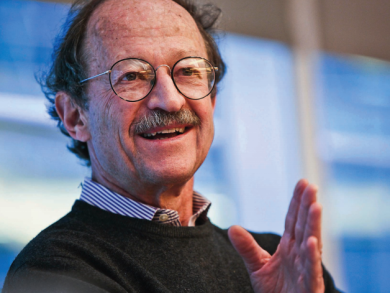This editorial by Harold Varmus, M.D., first appeared in Science. Read the original here.
When I was trained at a prominent New York medical center in the 1960s, cancer was relegated to a minor place in the curriculum. Cancer patients were housed in a separate hospital, rarely visited by students or the medical house staff. If not amenable to surgery or radiotherapy, most cancers were regarded as hopeless. Research on cancer was not accorded the attention received by infectious, endocrine, autoimmune, cardiovascular, or neuropsychiatric disorders.
Now things are dramatically different in research, teaching, and care. Much of the new optimism comes from an understanding of cancer's pathophysiology. Research has shown that cancers are intimately entwined with basic life processes—diseases of the genome, with perturbations of signaling pathways and essential cell functions. New diagnostic categories are based on genetic profiles, not just morphology. Effective prevention occurs through viral vaccines and behavioral changes that reduce exposure to mutagens; screening detects some cancers early enough for curative surgery. Therapeutic strategies are increasingly informed by underlying genomic damage or by the immunological responses to cancer-associated antigens. Such knowledge has driven annual reductions of 1 to 2% in age-adjusted cancer mortality rates in the United States for many years.
These encouraging signs have stimulated local, national, and even global efforts to hasten progress against cancer, with clearer strategies than were possible when President Nixon signed the National Cancer Act in 1971 and launched what is still called the “war on cancer.” President Obama's 2015 decision to devote a third of his Precision Medicine Initiative to oncology was predicated on the new promise of using genomics, informatics, and redesigned clinical trials to revise cancer diagnostics, improve prognostic tools, and develop new therapeutics. The Administration's more recent announcement of a cancer “moonshot,” led by Vice President Biden, aspires to move cancer research more quickly—accomplishing 10 years of work in 5 years—by leaping fences between disciplines, connecting health centers, and interweaving the academic and industrial sectors. Implausible goals that tarnished earlier campaigns, such as the elimination or cure of certain cancers by a certain date—the equivalent of a true moonshot—have been conspicuously absent.
Can such attention from national leaders be helpful without additional funds to support research? After all, despite this year's $2 billion increase, the budget of the U.S. National Institutes of Health remains about 20% below its value a decade ago, and fundamental problems in cancer biology remain unsolved... Expanded work on such questions requires expanded resources, yet provision of such funds remains uncertain.
Still, there are important things to do, even without enlarged Congressional appropriations. The White House is already using its convening power to encourage greater collaboration, information sharing, and team efforts. The vice president could use his popularity and bully pulpit to move beyond research to emphasize cancer prevention: the life-saving values of vaccines for human papilloma and hepatitis B viruses, the avoidance of tobacco use, the control of obesity. The Administration could also exercise its regulatory authority—most potently, to direct the Centers for Medicare and Medicaid Services (CMS) to allow reimbursement for molecular profiling of cancers. That would vastly increase the data available for analysis, accelerate interpretation of genetic profiles, provide a test bed for true sharing of clinical information, and allow future coverage determinations by CMS to be made more quickly and sensibly.
We are living in a remarkable time for cancer research, with synergies among its components and strong backing from the nation's leaders. Let us take advantage of this moment, even without the certainty of additional dollars.



